Sea-foam, Walcott, Norfolk, 12 June 2025
Hello, and welcome to this June Full Moon edition of Bracken & Wrack.
It’s at this time of year that the name of this little publication really sings to me. The bracken on the heath stretches out its newly unfurled fronds while the sea artfully curates an ever-changing display of wrack and other sea treasures along the shoreline.
A few mornings ago the sky was blue and I was tempted to take my morning coffee and a cereal bar down to the beach before starting to write. The seashore may be only a few minutes’ drive away but it never fails to surprise me or show me something new.
The waves that day were unexpectedly lively; in fact you could have had a good surfing session had you been a strong swimmer and so inclined (I noticed, though, that there was no-one at all in the sea, not even a seagull). The strong breeze was whipping the foam into a stiff froth which skittered in fragments across the smooth sand.
Checking the tide table I discovered that it was a matter of minutes until high tide, and remembering that the moon had been at full two days ago I expected a Spring Tide. You probably know all about these, but I didn’t really understand them until I came to live here.
The highest and lowest tides happen twice during every lunar cycle, around two days after each full and new moon rather than on the date itself. These are the Spring Tides (with nothing to do with the season of that name) while the Neap Tides take place ‘between the moons’, just after the first and last quarter. At those times the sea moves the least distance between high and low tides, its lacy edges struggling to get anywhere close to the promenade, let alone crash over the sea wall. Of course, because the tide turns every six hours whatever the phase of the moon, during a Spring Tide it has to fairly race over the ground to reach its highest and lowest tidemarks.
All this I’ve known for a while. Another useful snippet is the understanding that the most extreme Spring Tides happen around the spring and autumn equinoxes. That’s when the most exciting effects take place. It’s always worth the stickiness of a salty windscreen to park up by the sea wall and witness the power of the waves, white horses rearing, ready to leap across at any moment.
But what suddenly occurred to me (and again, you may well already know this) was that if Spring Tides are at their most extreme around the equinoxes, it would make sense that they are at their slightest around the solstices. In other words, just about now. And that might explain why, that morning, the foamy sea-marge never came close to my toes as I sat on the concrete edge of the promenade, gratefully sipping my coffee.
This time in Bracken & Wrack, you’ll find:
Coffee By The Sea
Kingdom Of The Horse: Pegasus and its north eastern star
What If? A poem
Beyond The Ninth Wave: the story of Sea Charm
In The Footsteps Of St Bega: hills, hedgehogs & holy wells
I always say that I live in a hidden corner of Norfolk. In actual fact our coastline curves around, almost inscribing a semi-circle. But if this land were square, this place actually would lie in the north eastern corner. And for some reason that makes me think of the constellation Pegasus with its Great Square of brilliantly twinkling stars.
Which leads me to wonder which of the winged horse’s named stars lies in the north eastern corner. Do you happen to know?*
How very magical to even be considering Pegasus, when you think of our native Iron Age tribe the Iceni, with their evident love of horses. You should see the pieces of Iceni horse-harness that have been found here. So pleasing to the eye, and inviting touch even through a glass case or the printed page. Exquisitely decorated and full of symbolism we can now only guess at, it’s surely so much more than ‘furniture’ (which is the word for pieces of horse harness.)
In The Land of Boudica: prehistoric and Iron Age Norfolk, John Davies proclaims Iron Age Norfolk to have been ‘kingdom of the horse’, explaining that a high proportion of artefacts of this era found in our county are horse-related. As former Keeper of Archaeology at Norwich Castle Museum he must have seen many of the regularly-discovered harness and cart fittings, bridle bits, terrets (rein rings), linch pins and elaborate harness decorations brought in for identification.
Decorated mouldings from an Iron Age bridle bit, found in Swanton Morley, Norfolk
Some of the skilfully-crafted metalwork may even have been fashioned in this very corner of Iceni territory. After all, our cottage is not far from the village of Irstead, one of four locations where coins were probably minted (Freckenham, Snettisham and Bury St Edmunds being the other three).
Decorated terret from Carleton Rode, Norfolk
The horses (of course), the long-legged wolves, the sun, the moon and other celestial bodies, the grain and the fine braided hair and the ash leaves that all melt together like the stars of the Pleiades - were their images inspired by this place, this corner?
Well, let’s cave in and call it an arc. Yes, a broad stroke that sweeps around the opened bedroom window while its spiral latch rattles against the east wind.
I lean out to catch the low roar of the waves as they smooth the land’s sharp edges over and over again.
* Although Pegasus contains 15 named stars, it’s the brightest four that make up the Great Square. These are Markab, Algenib, Alpheratz and Scheat (try saying the words, they feel lovely in the mouth). ‘Ours’ here at The Old Shop, I’ve learned, is Scheat.
WHAT IF?
What if you dared to paint?
What if you resolved
to clear that work table,
set out colours?
You know, the pale and
earthy ones you love,
perhaps with a flash of
the heart-stopping
sea-bleached turquoise
that called to you
over the sand?
Shell pink, the inside?
Those smooth chalky fragments
banded with colours
of seal, rock and rust?
Oh and not forgetting the
numinous hues of seaweed
cast onto the shore by the
ever-fickle waves.
A gift for the sea-gods at twilight, South Cove, Suffolk, 8 June 2025
BEYOND THE NINTH WAVE: the story of Sea Charm
When I fulfilled a long-held dream by creating Owl Flight - my first seasonal candle embodying the festival of Twelfth Night - I knew I needed to invite curiosity about every aspect of it. The dream grew wings, and I wanted friends to understand that by signing up for a candle they were actually participating in a set of stories. Owl Flight was a journey, not an object.
It helped that there was something tangible to anchor the tales. Something you could hold, smell and set ablaze to enjoy its tiny flame. And even hear, since Owl Flight was fitted with a wooden crackle-wick to symbolise the crackling of comforting winter fires in the hearth.
Symbolise. Yes, that’s the thing. Each candle was intentionally rich with symbolism but I think that it was with the third, Sea Charm, that I really leaned into the stories and let them flow as they willed. And, more often than not, the imagery followed the words.
Sea Charm, made for midsummer, was perhaps the first candle that truly showed me the magic of the journey. My own stories would now mingle with the many new ones that would, I hoped, be stirred into each vessel by its new custodian. Those tales might show themselves while the wax still pooled around the flame, but how many more might gather within the vessel during its afterlife?
I love the thought that a seemingly empty pot is amply capable of containing something far exceeding its physical volume. Indeed, its capacity is infinite, for who can say how many stories it might hold?
An empty Sea Charm candle vessel showing some of the nine waves stamped around its belly - but how empty is it really, when each sea-coloured marble holds a story and there’s room for plenty more? Bacton, Norfolk, June 2025
IN THE FOOTSTEPS OF ST BEGA: hills, hedgehogs & holy wells
This beautiful 20th century statue of St Bega is in the Lady Chapel in St Bees Priory, (25 May 2025)
There is a pilgrim route which wends through the Lake District up mountain sides, through fairy woodlands and along rock-strewn streams, leading from St Bees Priory - dedicated to St Bega - to the simple church of the same dedication that nestles under Skiddaw at the edge of Lake Bassenthwaite.
The route partly follows the Coast to Coast long distance trail and is not an easy one, or at least not if you’re fazed by heights and are carrying everything for wild camping on your back. Nor if you’re caught in torrential rain meaning that everything, and I mean everything, remains soaking wet for the rest of the pilgrimage. But I’m proud to say I did it, and over time I expect a few of our tales from along the way will find themselves stitched into the Bracken & Wrack patchwork quilt of musings and memories.
But this story is not really about Bega herself, although she is the holder of many mysteries to muse on - as we shall see another time.
Having set off from the Priory, one of the first enigmas we wanted to solve was the whereabouts of a shadowy holy well named for St Bega. Sacred wells are always something to seek out on any trail, and as no-one seemed to agree about this one’s location the challenge felt irresistible. One possible site of the well was up a steep grassy hill, its narrow trackway slippery with shale. This was a bit daunting so early in the walk, especially as it was a detour and at that time the weather was actually hot, but the lure of the potential holy well won the day. Sadly, the sacred site kept its secrets and we scrambled back down the hillside without having found it.
Now, speaking of hills in the Lake District, I’ve had a fascination with the one named Cat Bells since probably even before I could read. Certainly I can still remember practically every word of Beatrix Potter’s The Tale of Mrs Tiggy-Winkle, which is my favourite of all her books.
In the story, little Lucie scrambles up the hill that we learn at the end - as a postcript in tiny writing - is called Cat Bells. Here’s what happens next:
The image of the tiny tin can on the stone collecting the pure spring water has always haunted me, as has the tiny door in the hillside that Lucie discovered shortly afterwards.
Needless to say, when we were so close to Cat Bells that there was the option of making a detour to climb it, I would have been ready and waiting. Except that by this time the rain had started. Anything extra probably wasn’t a good idea, besides which the landscape views from the top were likely to be monochrome and veiled with cloud.
I really wanted to climb Cat Bells even though, truth to tell, I’m challenged by height and particularly by narrow paths up the sides of steep hills or mountains. (Cat Bells, at 451 metres, is technically a hill.)
So we returned after we’d completed St Bega’s Way, once the mist and drizzle had lifted. Luckily, the day looked to be fair for the climb. Cat Bells is often said to be the second easiest of the Wainwrights to summit. As we were deep into Whitsun holiday week the trail was very busy, and I wondered how some of the tiny children or less able adults would manage some of the rocky sections that required a bit of scrambling.
Whole families snaked along the track together, including the tiniest of children who were either going to have to be carried or be more agile and intrepid than their accompanying adults.
The scramble over the rocks at the end was actually not that easy so that’s probably why I never noticed the spring or the tiny cup or the door into the hill. Then again, maybe they lay on the side less traversed where no trails have been marked, even by Wainwright.
The reward for making it to the summit was the view over Lake Derwent and the green blob that is St Herbert’s Isle. This island is a node or touchstone in the journey, I reflected, since it turns up in both Bega’s story and in The Tale of Squirrel Nutkin, another of my favourite tales by Beatrix Potter.
Spirit Chaser: the quest for Bega by Alex Langstone delves into the twilight past of seventh century Britain and Ireland, fuelling a spiritual quest inspired by the mysteries surrounding St Bega and her legendary bracelet or ring. Depending on your viewpoint you might see the story presented here as fiction, as channelled wisdom or as fact-based conjecture, but it was definitely part of the reason I was so keen to walk St Bega’s Way. What I hadn’t realised was that our journey would lead us within sight of the island home of St Herbert, the Celtic mystic who plays a key role in the legend of St Bega and subsequently the Quest outlined in Spirit Chaser.
The following day she went to visit Herbert on his Holy Island in the middle of the neighbouring lake … firstly following the lakeshore from her newly built hermitage, then continuing along the broad river valley … Eventually the river led to another large expanse of water, a very broad lake amongst some very high mountains. Dotted in its centre were several very small islands. One of these islands was the hermitage isle of Herbert. Bega stared hard at the group of little islands, trying to guess which one Herbert lived on. She knew that his island was thickly wooded … - Alex Langstone, Spirit Chaser
Oops, I know this is something of a digression, but I have to tell you how excited I was to discover that St Herbert’s Isle was actually the inspiration for Owl Island in The Tale of Squirrel Nutkin! The little band of squirrels rafting across to collect nuts on the island using their tails as sails is one of those pictures that never leaves your mind.
Squirrel Nutkin and friends sailing to Owl Island aka St Herbert’s Isle - I held down the corners with pebbles from St Bega’s Cave near St Bees :-)
Our own pilgrimage was at an end. We’d not found St Bega’s Well, nor Mrs Tiggy-Winkle’s crystal spring. Still, we finished the trail inside the little church by the lake happy, and with a feeling of completion.
St Bega’s Church beside Lake Bassenthwaite, in the shadow of lofty Skiddaw, Cumbria, 28 May 2025
When the journey is done, it’s always hard to let go, especially if there’s no pressing need to get back to the mundane world for a day or two. We’d already pinpointed a couple of churches and a holy well that lay close to our homeward route. Not so far, indeed, from Appleby that cropped up in the last Bracken & Wrack.
Through one of these wonderful chance encounters on the road that always seem to happen, we’d discovered a perfect open air swimming pool WITH HOT SHOWERS on the way to the start of the pilgrimage. Not surprisingly, it seemed a good idea to stop off again on the way back to Norfolk. The churches and holy well lay in nearby villages, so what better way could there be to spend the last day?
As is often the case, time raced by. Searching for a dried up holy well with only the vaguest indication of its whereabouts sadly had to slip from the agenda. That left the two churches.
St Cuthbert’s at Great Salkeld had attracted me when I read that there had been a church there since 880 when St Cuthbert’s body was rested there on the way from Lindisfarne. It was indeed a lovely place.
But it was ancient St Oswald’s with its separate bell tower atop a steep grassy hill at Kirkoswald that held the big surprise. After exploring the church, the hill called out to be climbed and its tower to be touched. Skirting the nave we were scanning the back of the churchyard for a gate or a gap, when I noticed something we hadn’t known about when deciding to visit here. A little pewter cup on a chain, and a covered well cistern right against the ancient wall of the building.
Lifting the cover and peering down, we found ourselves face to face with the holy well of St Oswald, the Christian Anglo-Saxon king of Northumbria who ruled from 633 until his death in 642.
Thrillingly, the spring flowed under the church and across its nave. And not just under the nave, but below the High Altar itself.
How magical is that?
Of course, the cup was dipped and drawn up, overflowing, from its mossy depths.
Holy Well of St Oswald, Kirkoswald, Cumbria, 30 May 2025
Until next time.
With love, Imogen x



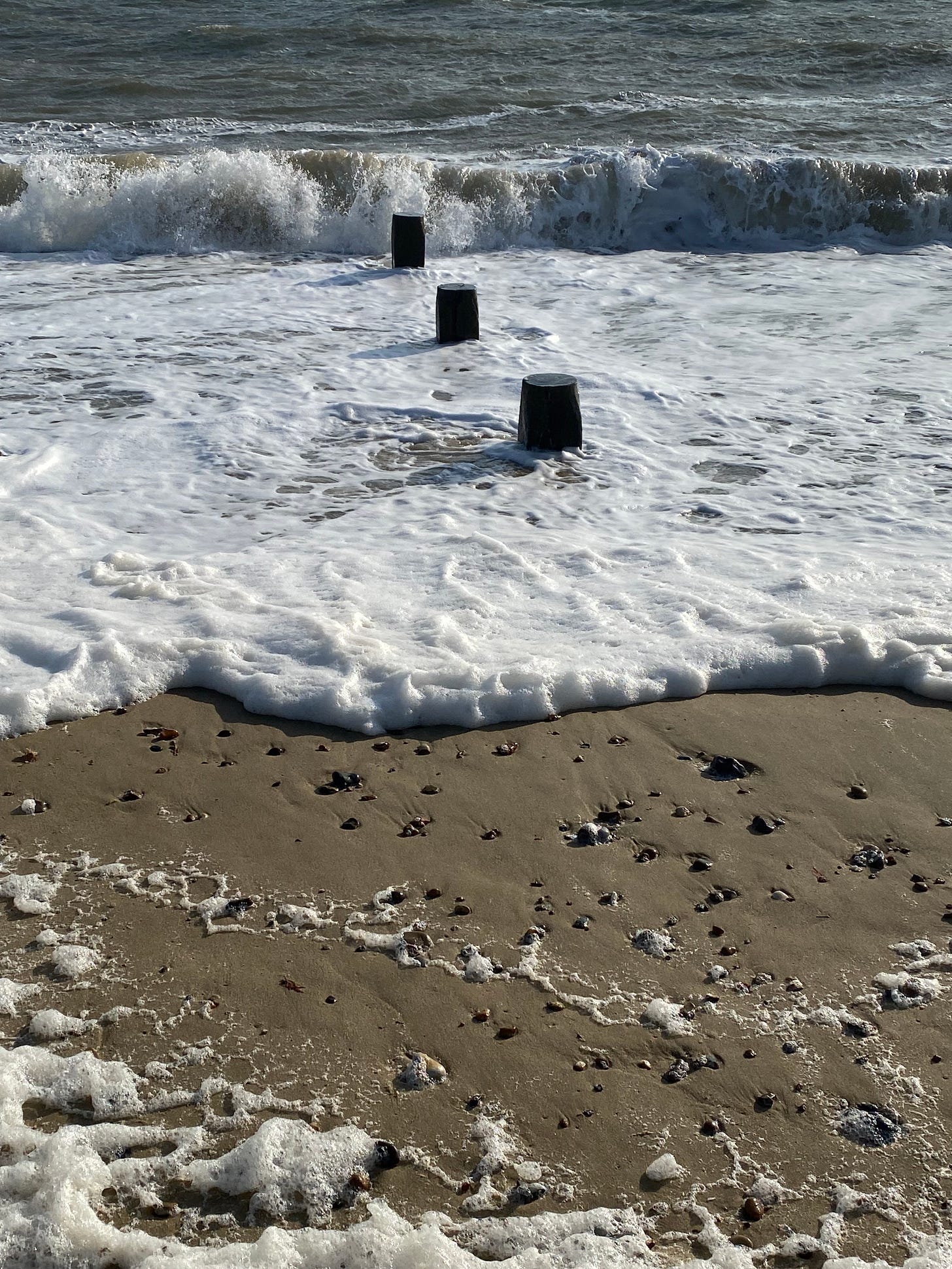
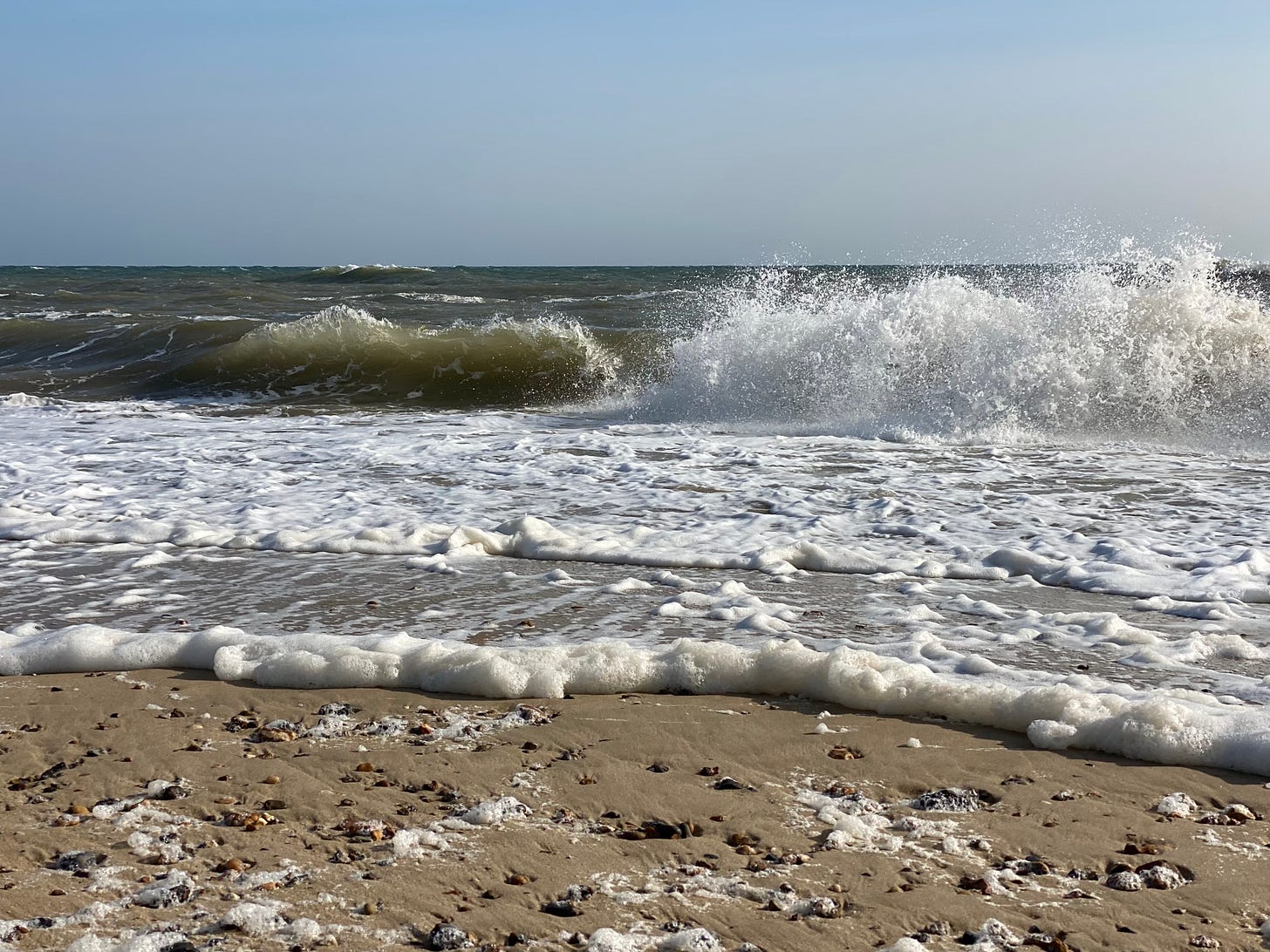
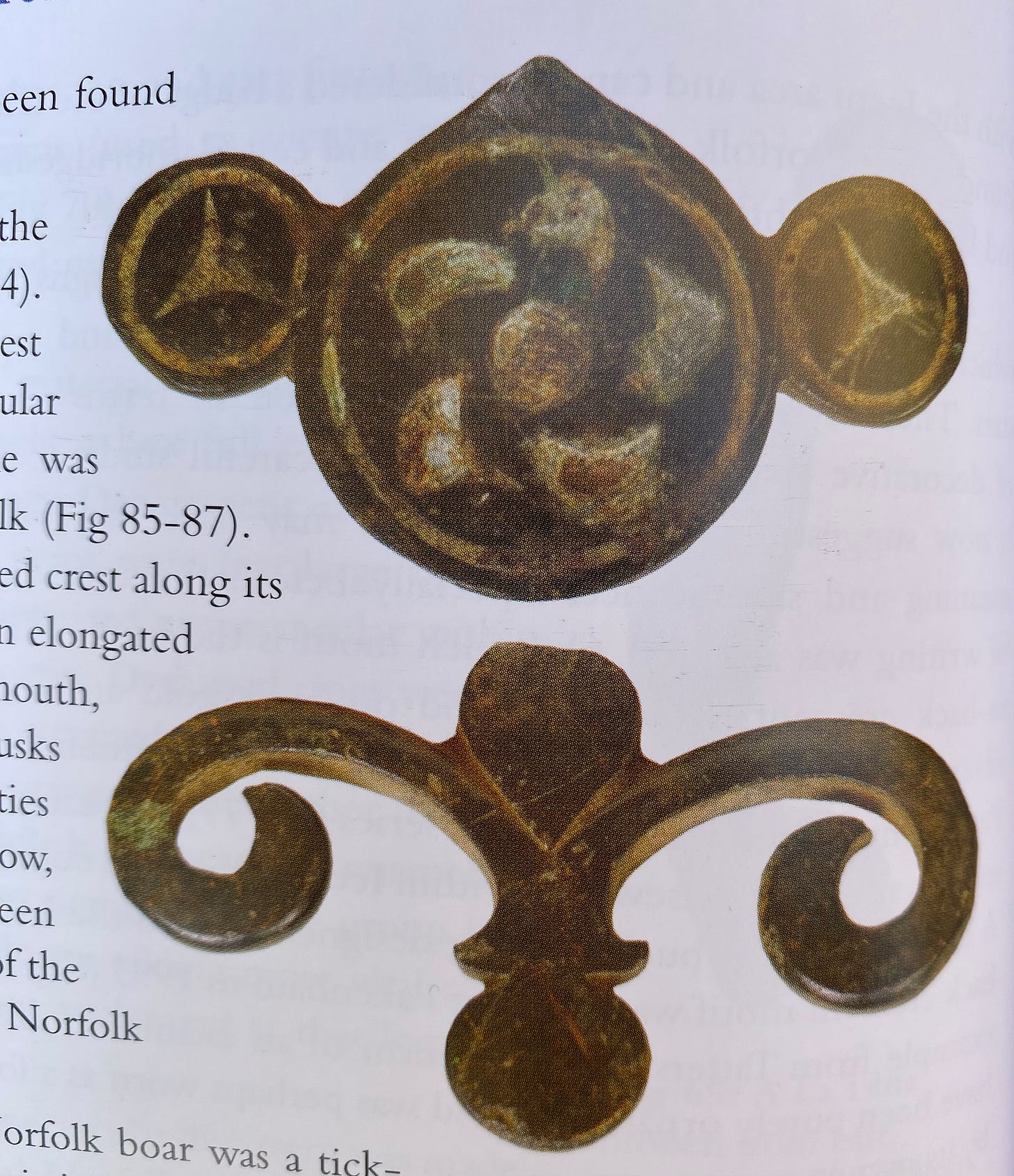
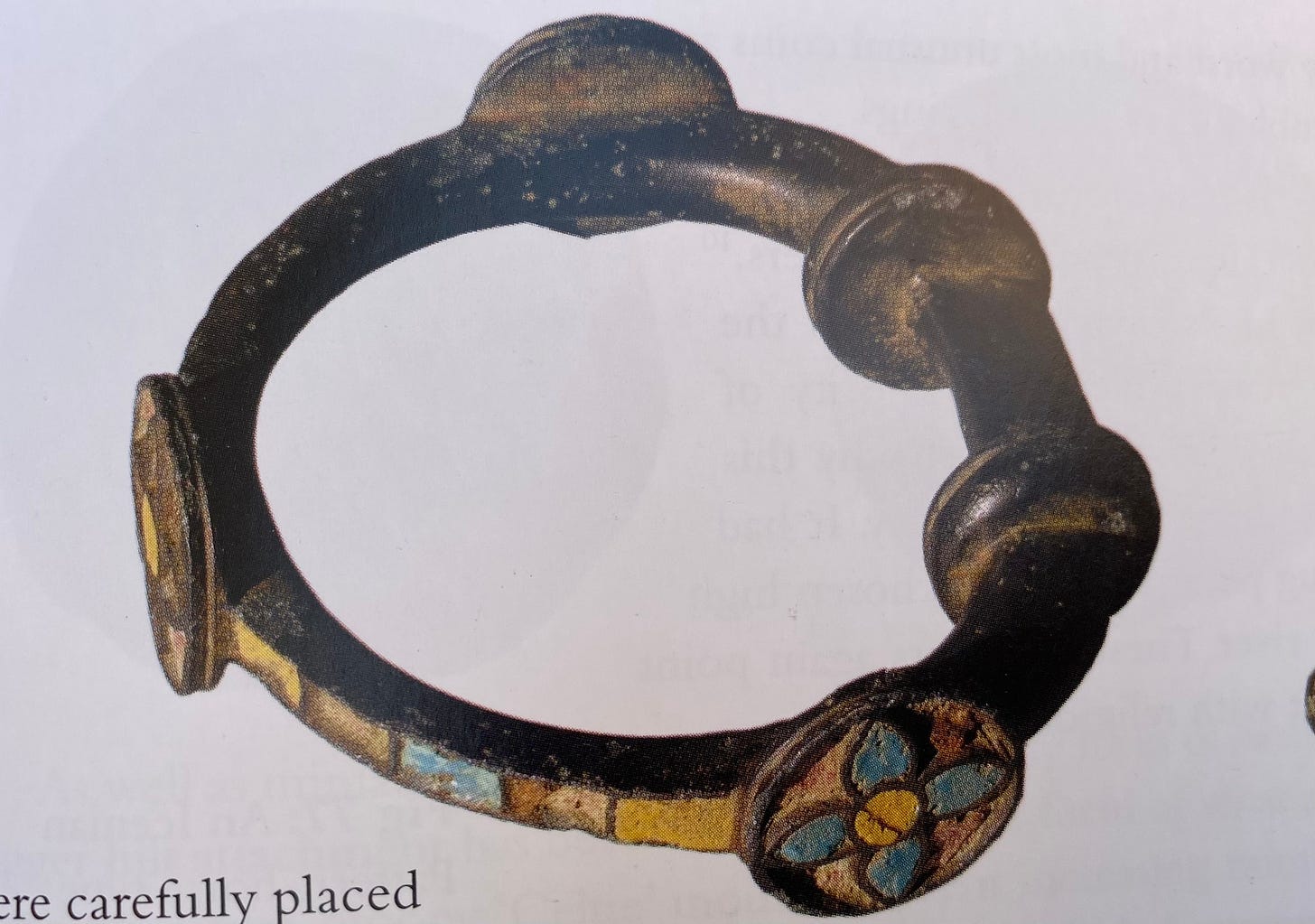
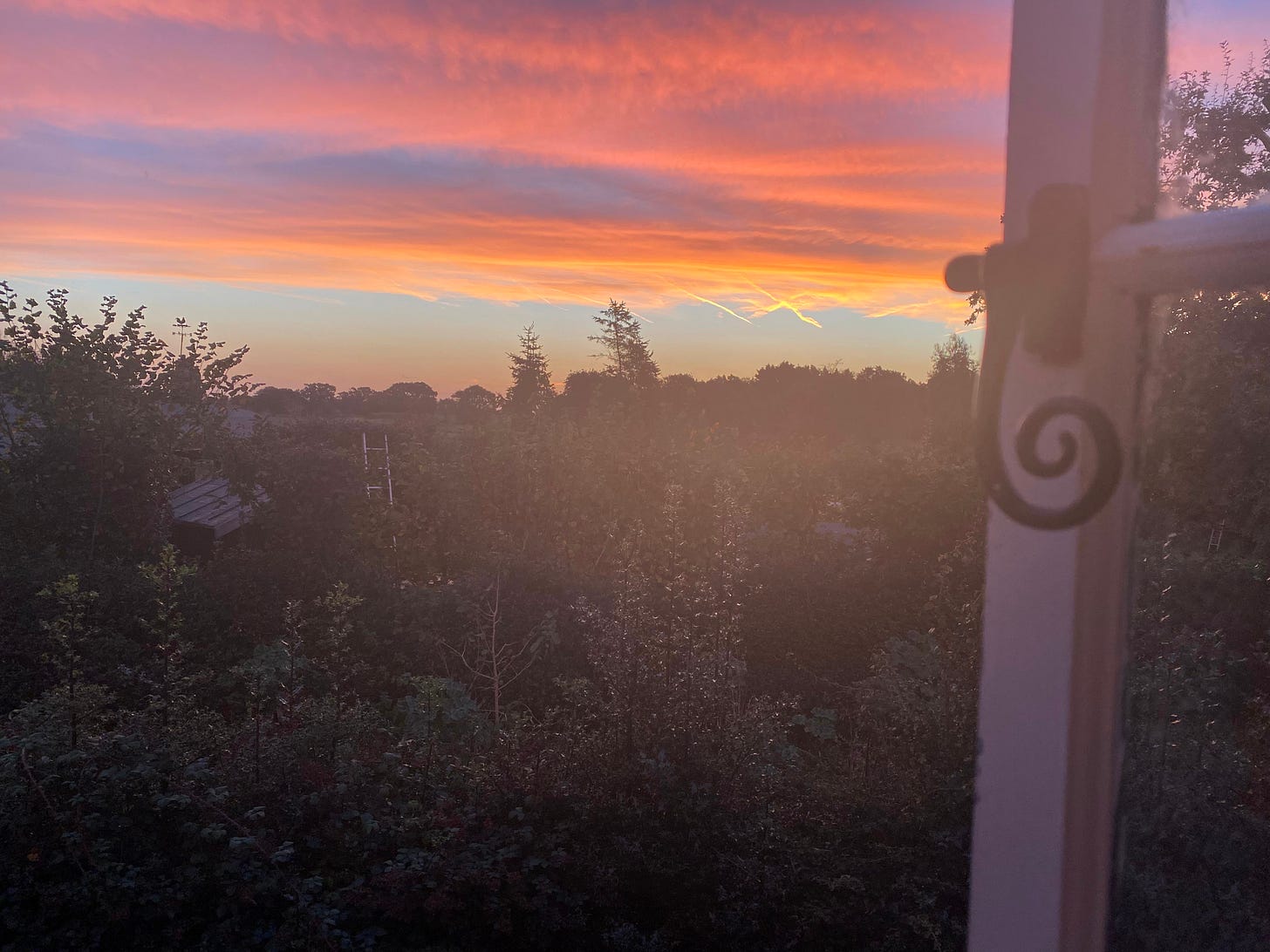
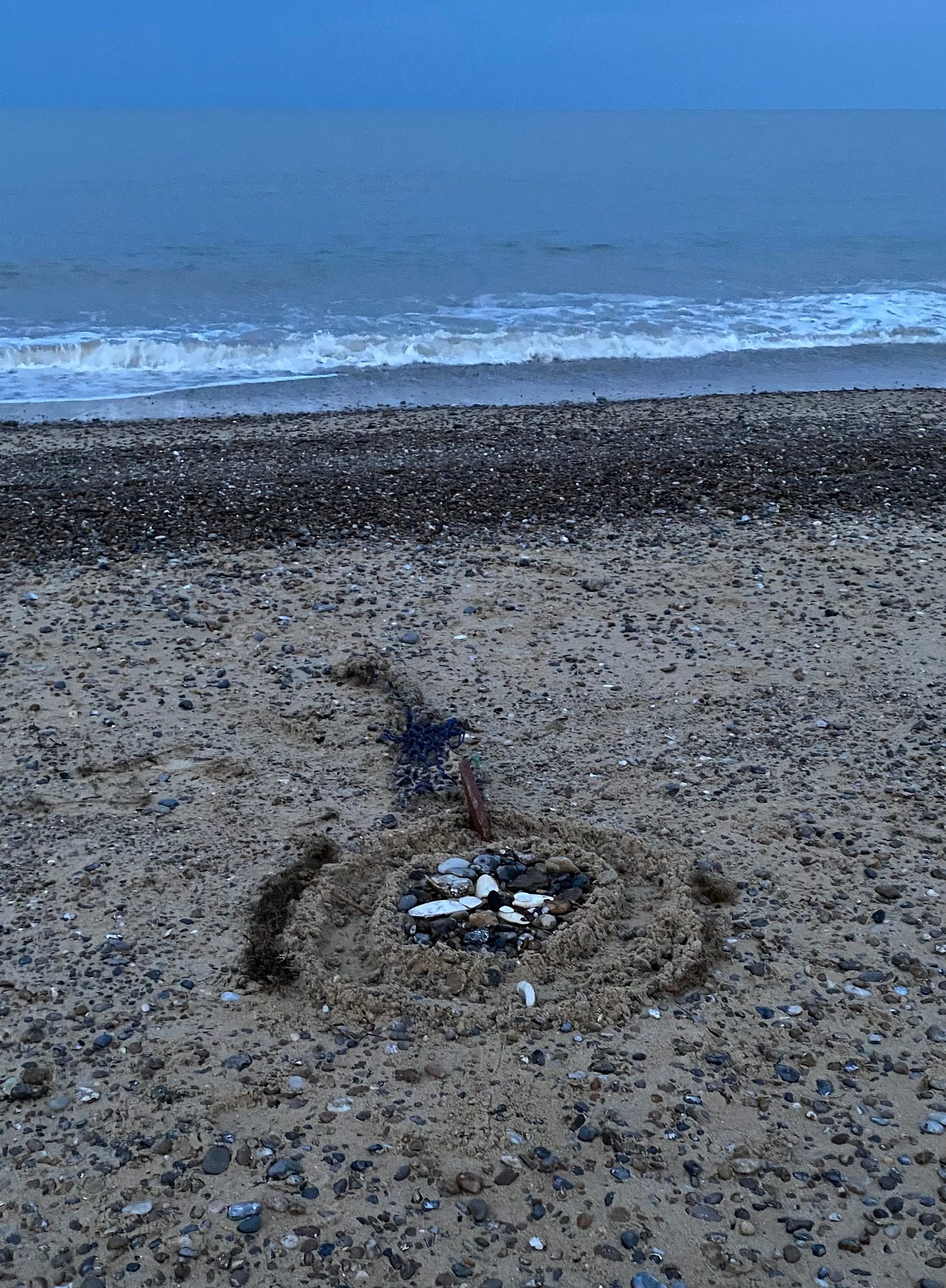
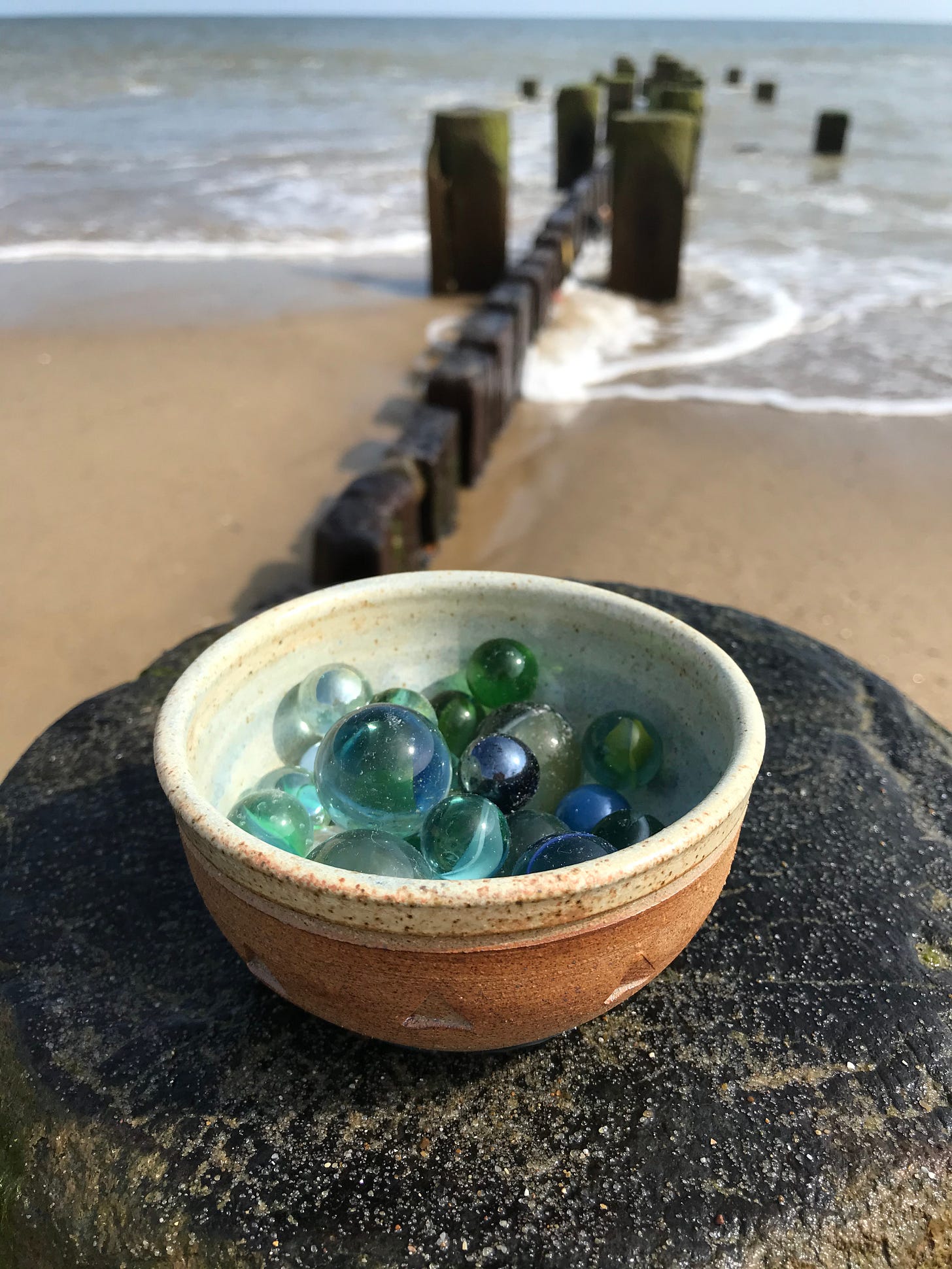
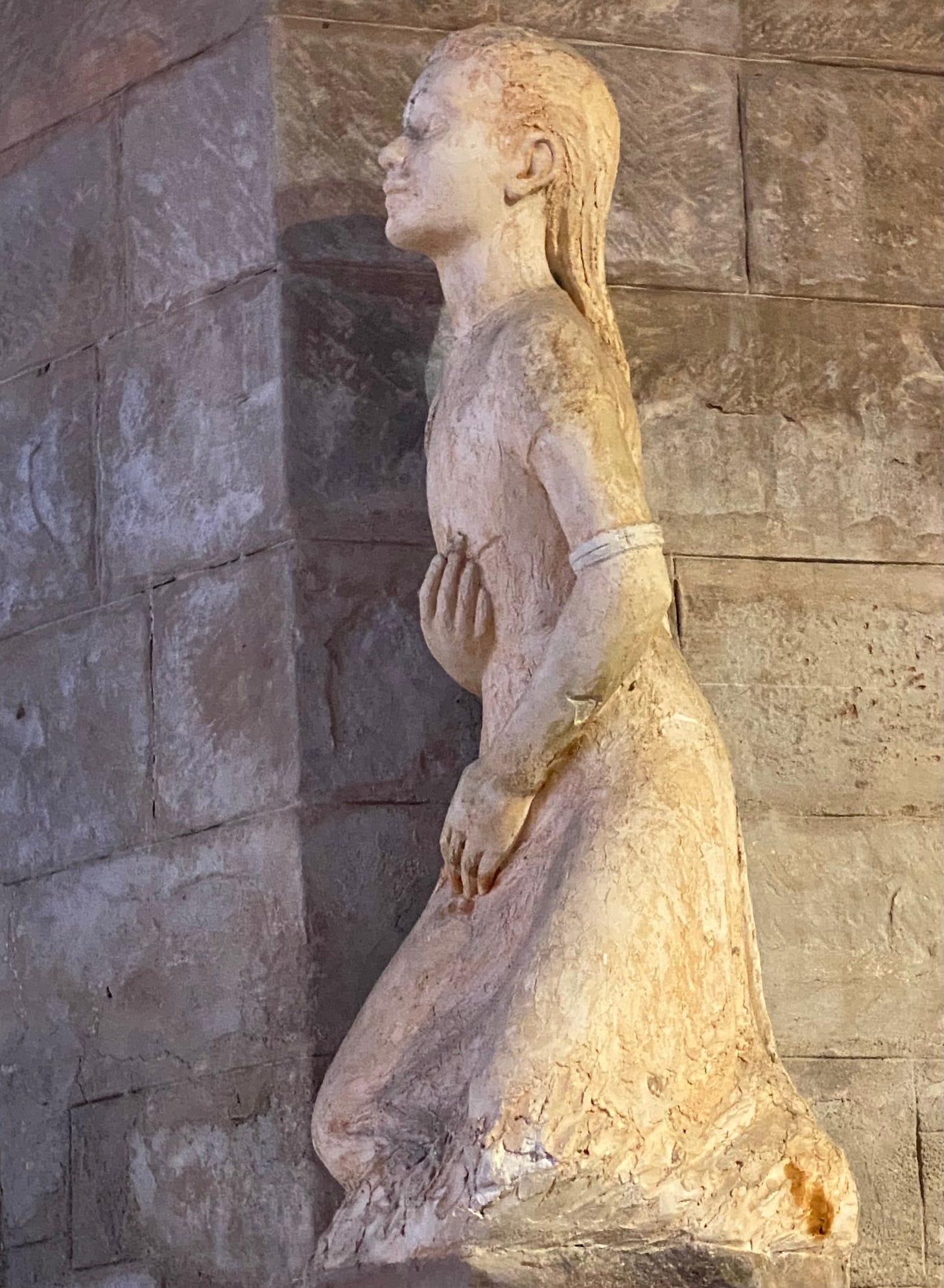
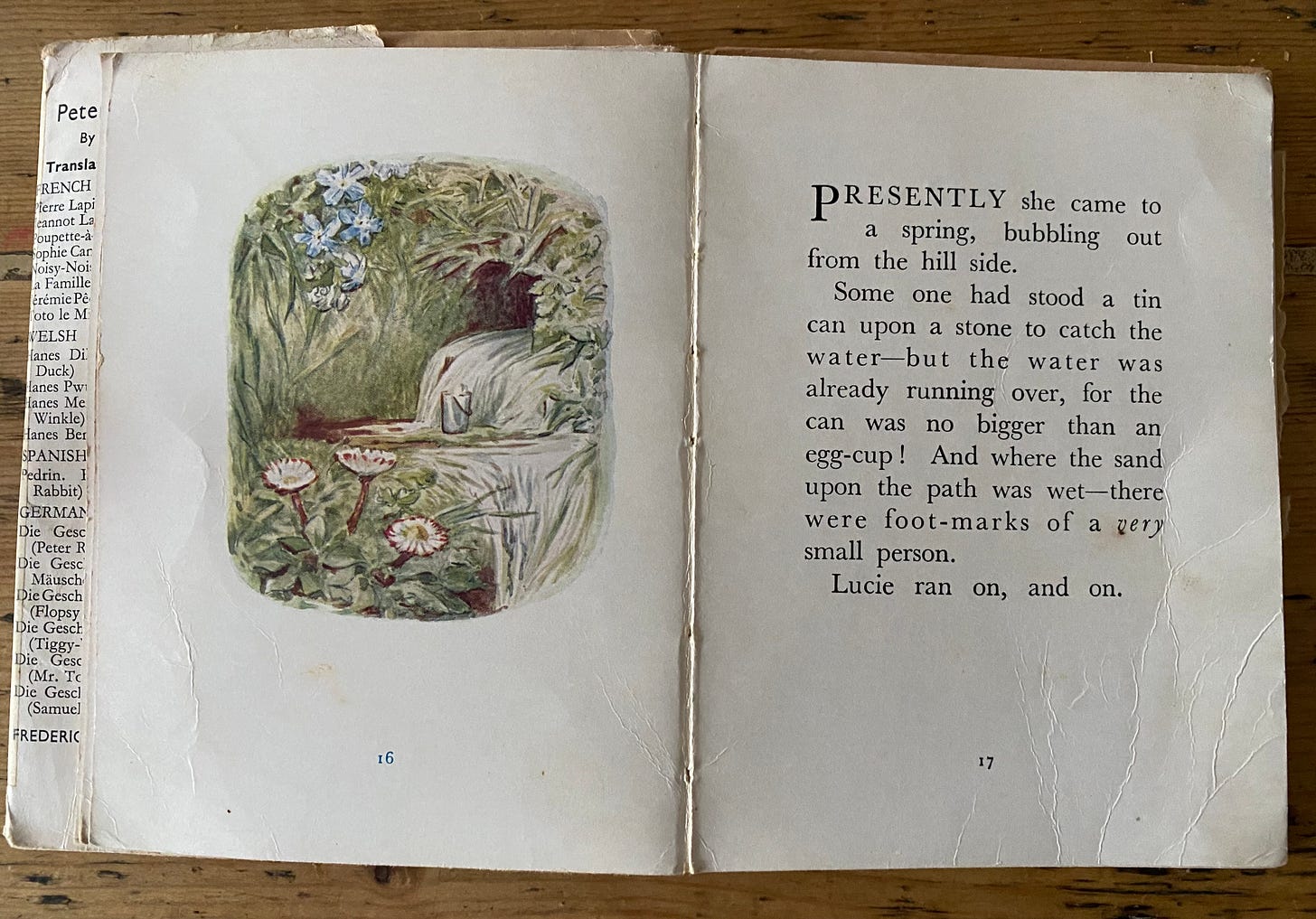
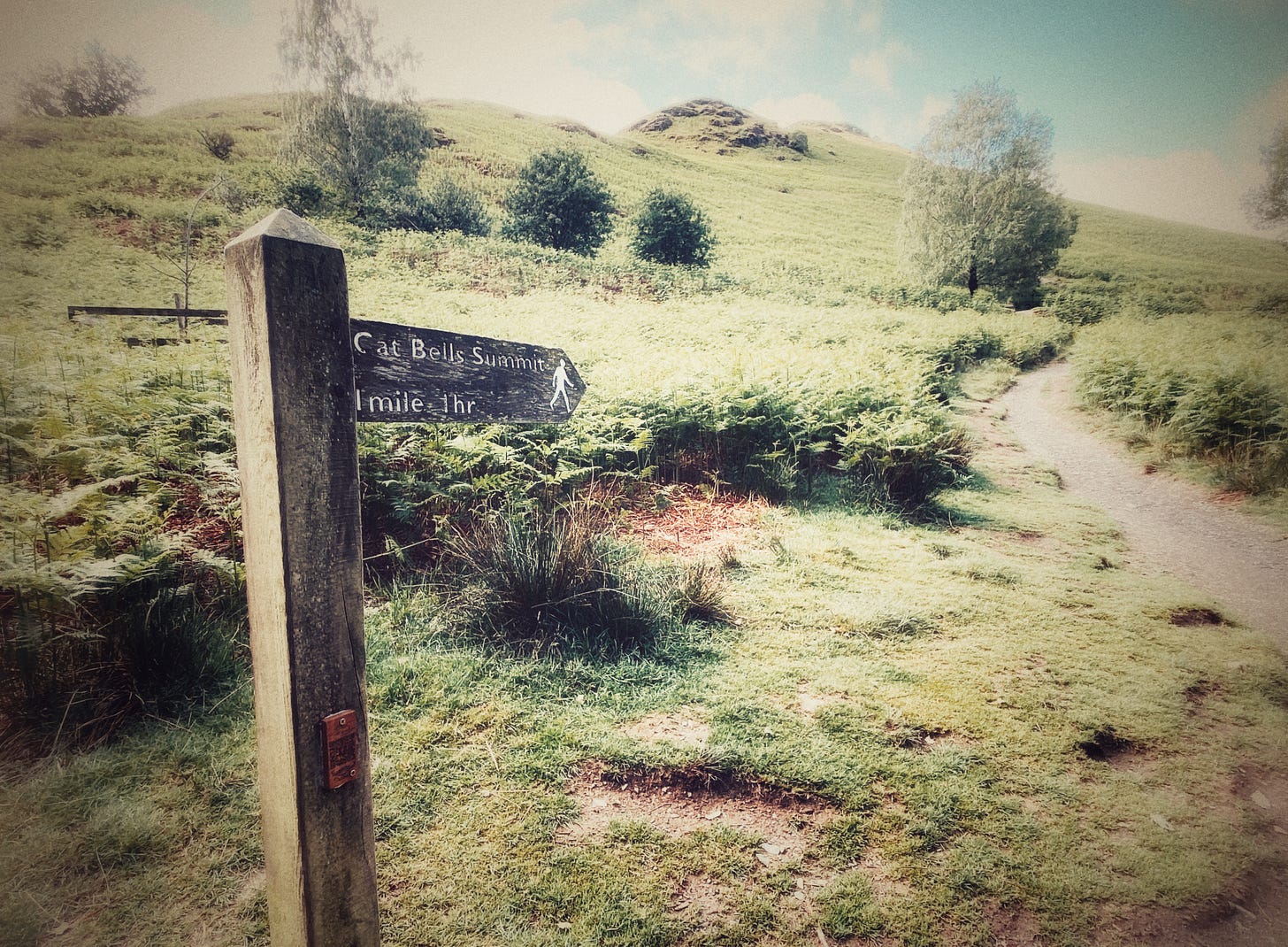
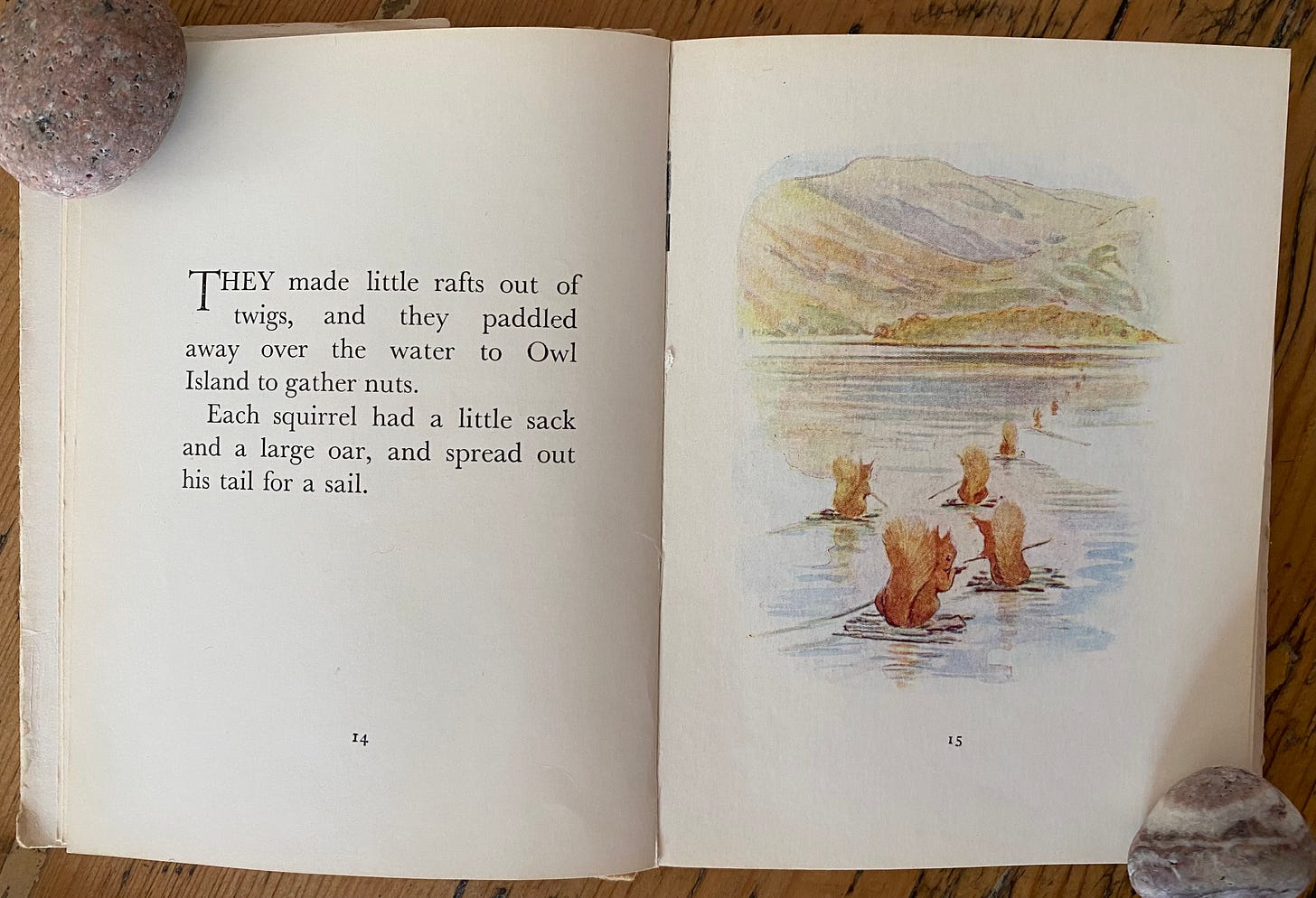
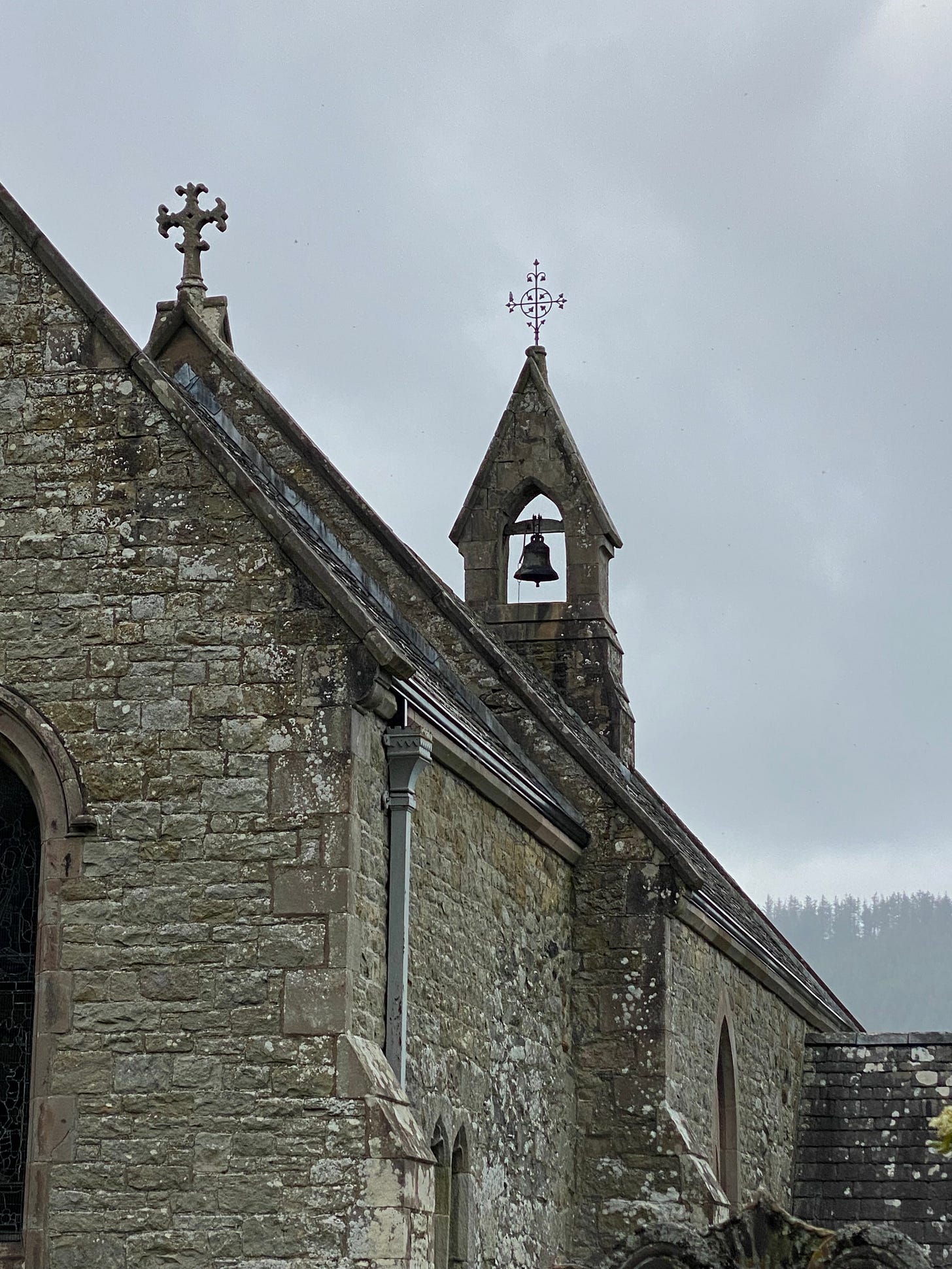
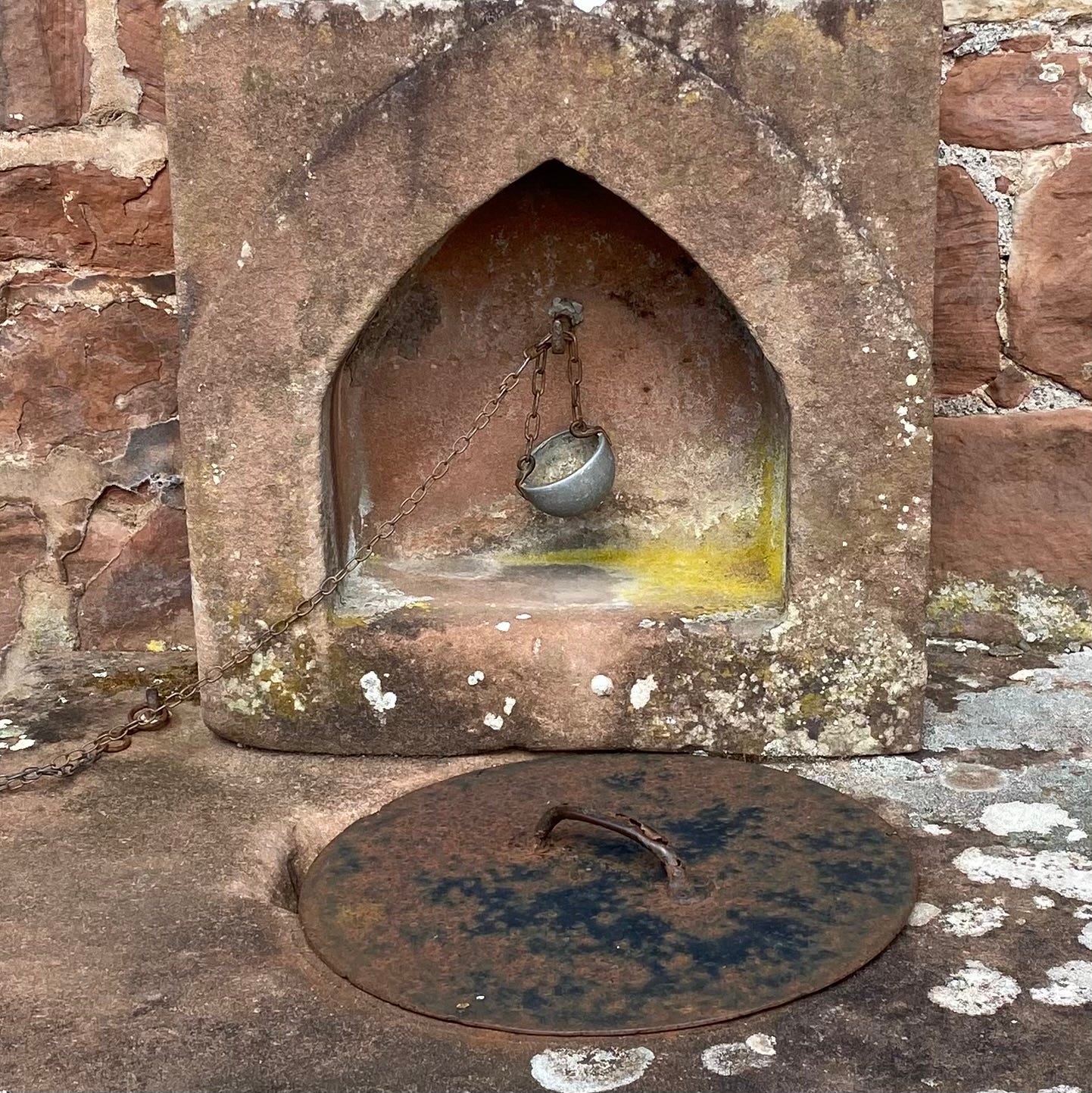
Beatrix Potter is a favourite of mine and I just linked to a video in the group that has a link to her as well. You didn’t find what you were aiming for but as they say, the journey is the destination. Thanks for taking us along.
Thank you for bringing us the sea on this hot day in Oxford! it was most welcome!